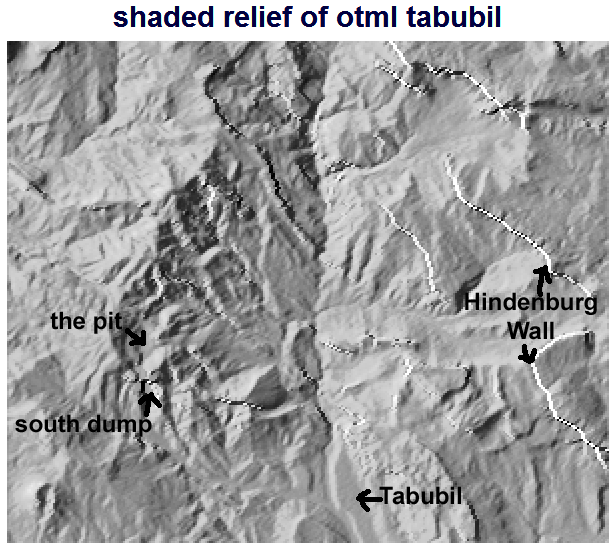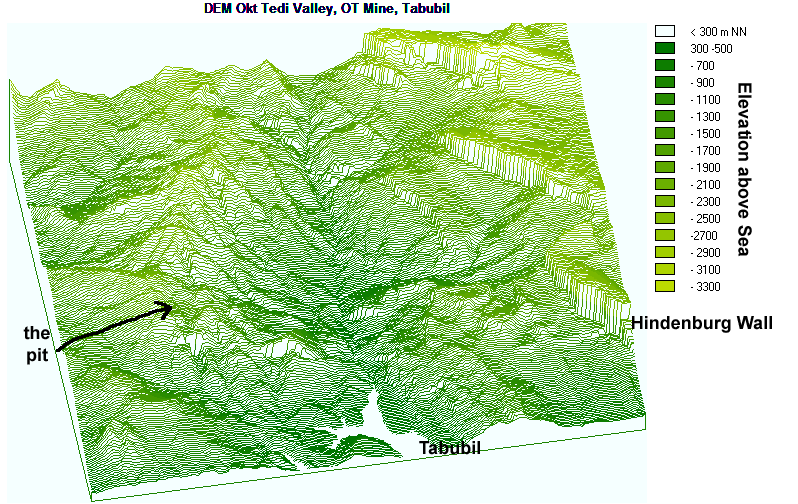MinespottingThe US Space Agency NASA produced world maps from satellite views, tediously stiched from hundreds of cloudless images. Thus earth's surface can be displayed in one high resolution picture, either in (visible) daylight, or at night, illuminated by man's activities. Clearly divided is the planet, into glittering zones of wealthy countries, and sparsely lit poor nations. The darkness of the island of New Guinea is punched by few major cities, like Port Moresby, and the big mining projects.
The oil fields of Kutubu shine brightest, the gold mines of Lihir, Misima, and Porgera, and the copper pits of Ok Tedi and Freeport make their mark. Compared to the cities, they demonstrate the importance of mining industries to the country. But we all know the problems we
will see, when we take a closer look at daylight, and talk to the
people who live there. Another view from space on
earth is possible by radar waves. The advantage is, that radar
carries its own source of light on board the satellite, and it
permeates clouds. If the radar echo from earth's surface is detected by
two antennae, one can produce a stereoscopic view. From a space shuttle
the surface of earth between the 60th parallels was scanned. Still, the
evaluation of the very bulky files has not been completed, however, the
raw data are provided by NASA.
The complete map, a composite
of elevation and hillshaded image in jpeg-format, georeferenced
for use in GIS software, can be downloaded, but beware of a 2.5 MB load.
More minespotting see next page created Dec. 2003 ftp download site srtm data |





 rettet-die-elbe.de
rettet-die-elbe.de
